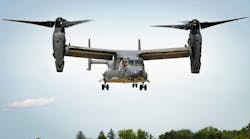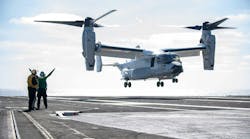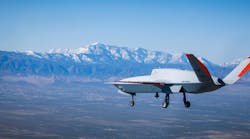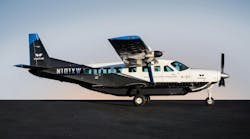The Boeing B-52 Stratofortress first entered into service in 1955, making it operationally 65 years old this year (although it was actually ‘born’ in 1952).Technology has changed radically since then, with the development of advanced anti-air systems, stealth aircraft and more. Somehow, in this rapid pace of change, the B-52 has managed to stay relevant, functional, and critical to US operations. It has filled a wide range of roles, from strategic attack and close air support, to offensive air and sea operations, and although in human terms it will reach US ‘retirement’ age next year, the B-52 shows no signs of retiring.
GlobalData’s defence technology writer Harry Lye investigates the incredible longevity of the ‘king of the skies’.
Lye says: “The B-52 has shared the skies with a range of other aircraft, fulfilling its tactical bombing role while the fighter jet saw a rapid, successive change. In the time the B-52 has flown the US Air Force has seen F-4 Phantom give way to the F-22 Raptor, and now the Lockheed Martin F-35. The air force aims to fly the B-52 through 2040, just two years after the last F-35 is due for delivery by Lockheed Martin.
“To stay so relevant for so long the B-52 has seen its fair share of overhauls and refits, which have upgraded nearly every part of the airframe over the years.
“These efforts continue into the present day. Last year Raytheon won a contract to upgrade the aircraft’s radar and and allow it to act as a ‘mothership’ for an airborne hypersonic missile test, applying 1950s technology to the world’s newest missile threat. If hypersonic missiles weren’t enough, the air force is also reportedly looking to equip the B-52 with laser-based missile defence systems. These upgrades would see one of the oldest serving airframes equipped with some of the US Air Force’s most advanced technologies.
“In the 1960s the Chief of Staff of the US Air Force General Curtis E LeMay said: ‘I am afraid the B-52 is going to fall apart on us before we can get a replacement for it. There is a serious danger this may happen.’
“Decades later the sentiment of LeMay’s words still stands. The B-52’s original replacement, dubbed the ‘Next-Generation Bomber’, was scrapped and replaced with the programme to build the B-21 Long-Range Strike Bomber. According to the congressional research service, the US’ new bomber should arrive at some point in the next decade.”
Describing how the B-52 has managed to stay relevant for so long, a spokesperson for the US Air Force’s 2nd Bomb Wing told GlobalData: “The United States needs a long-range strike platform capable of striking targets around the globe and the B-52 has continued to be a workhorse because we have adapted to the changing environment. We also have a reliable plane maintained by top-notch professionals, and flown by a new generation who is eager to remain on the leading edge of tactical employment.”




